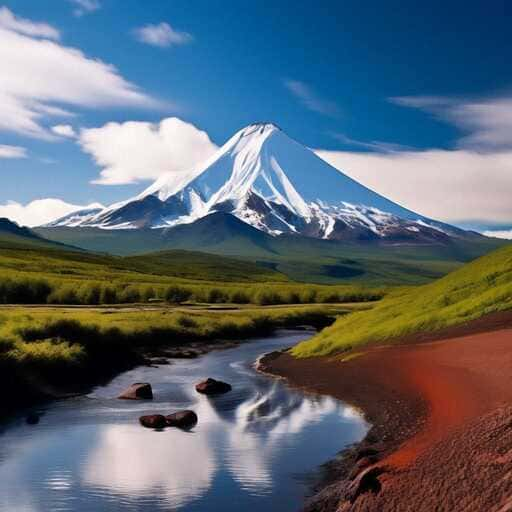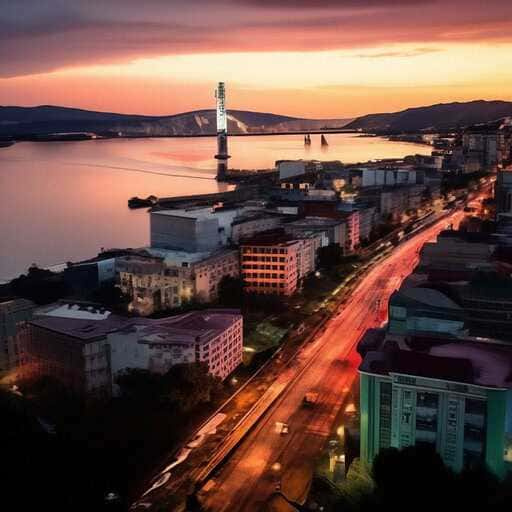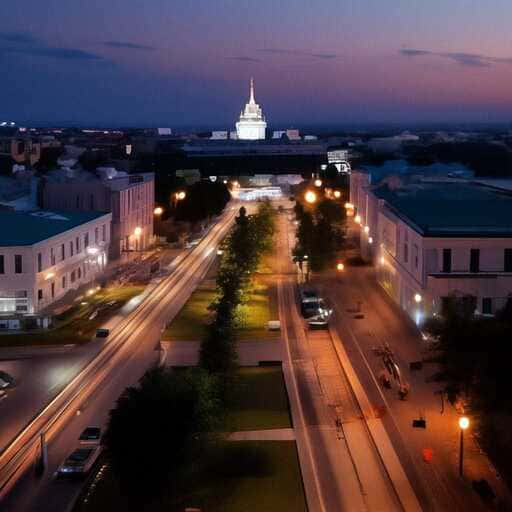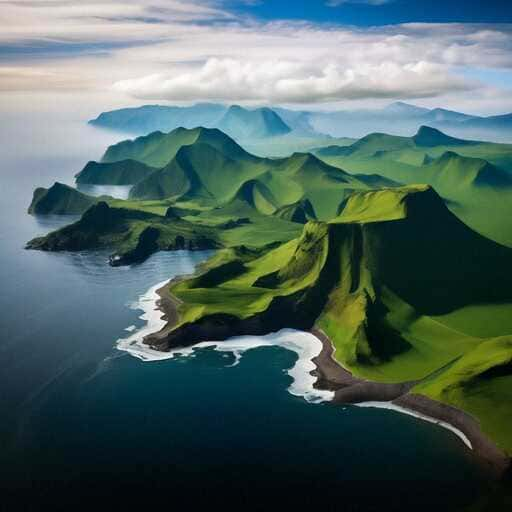Russia’s Far East is a vast and remote region that is often overlooked by travelers, but those who venture to this lesser-known corner of the country are rewarded with breathtaking landscapes, rich cultural heritage, and unique experiences that can’t be found anywhere else. From the towering peaks of the Kamchatka Peninsula to the historic cities of Vladivostok and Khabarovsk, the Far East offers a diverse array of attractions that are sure to enchant even the most intrepid explorers.
To help you make the most of your journey to Russia’s Far East, we’ve put together the ultimate guide to exploring this off-the-beaten-path region. Whether you’re an outdoor enthusiast looking to hike through pristine wilderness or a history buff eager to learn about the region’s past, there’s something for everyone in this remote corner of the country.

Image: Shedevrum
Kamchatka
Kamchatka Peninsula, located in the far eastern region of Russia, is a remote and rugged land of stunning natural beauty and unique wildlife. Known for its volcanic activity, hot springs, and diverse ecosystems, the peninsula is a paradise for nature enthusiasts and adventure seekers alike.
One of the most striking features of Kamchatka is its impressive chain of volcanoes. There are over 160 volcanoes on the peninsula, 29 of which are still active. The most famous of these is Klyuchevskaya Sopka, which is not only the highest volcano in Russia, but also the highest active volcano in Eurasia. The constant volcanic activity has created a dramatic landscape of lava fields, ash cones, and steam vents, making Kamchatka a geologist’s dream.
In addition to its volcanic activity, Kamchatka is also home to a wealth of hot springs. These geothermal pools provide a relaxing contrast to the rugged terrain and offer visitors a chance to soak in the rejuvenating waters while surrounded by pristine wilderness. The Valley of Geysers, a UNESCO World Heritage site, is one of the most famous hot spring destinations in Kamchatka, known for its bubbling mud pots, boiling springs, and, of course, geysers.
The wildlife of Kamchatka is equally impressive. The peninsula is home to a rich variety of animal species, including brown bears, reindeer, foxes, otters, and over 100 species of birds. One of the main draws for wildlife enthusiasts is the opportunity to witness the annual salmon run, where thousands of fish make their way up the rivers to spawn. This event attracts not only bears, but also eagles and other predators, creating a thrilling spectacle of nature in action.
For those looking for outdoor adventure, Kamchatka offers a wide range of activities, from hiking and camping to fishing and whale watching. The peninsula’s remote location and pristine wilderness make it a paradise for outdoor enthusiasts looking to escape the hustle and bustle of modern life.
In recent years, Kamchatka has seen a growing interest from tourists looking to explore its natural wonders. While still relatively undiscovered compared to other regions of Russia, the peninsula’s unique combination of volcanic landscapes, hot springs, and diverse wildlife make it a destination worth visiting for anyone with a love of the great outdoors. Whether you’re an avid hiker, wildlife enthusiast, or simply a lover of stunning landscapes, Kamchatka Peninsula has something to offer for everyone.

Image: Shedevrum
Vladivostok
Vladivostok is a vibrant, bustling city located in the far east of Russia, on the shores of the Pacific Ocean. Known for its stunning natural beauty, rich history, and diverse cultural influences, Vladivostok is a city that offers a unique blend of tradition and modernity.
Originally founded in 1860 as a military outpost, Vladivostok quickly grew into a major port city and a strategic center for trade and maritime activities. Today, it serves as the administrative center of the Primorsky Krai region and is considered one of Russia’s major gateways to the Asia-Pacific region.
One of the most iconic landmarks in Vladivostok is the Russky Bridge, which spans the Eastern Bosphorus Strait and connects the city to Russky Island. This impressive structure is the longest cable-stayed bridge in the world and has become a symbol of Vladivostok’s modernity and progress.
In addition to its modern infrastructure, Vladivostok is also home to a wealth of historical and cultural attractions. The city’s central square, known as Lenin Square, is surrounded by grand Soviet-era buildings and serves as a popular gathering spot for locals and tourists alike. The Vladivostok Fortress, a historic military complex dating back to the late 19th century, offers visitors a glimpse into the city’s past as a strategic military outpost.
For nature lovers, Vladivostok boasts a stunning coastline with pristine beaches, rugged cliffs, and lush forests. Nearby wildlife reserves and national parks provide opportunities for hiking, bird-watching, and other outdoor activities.
Vladivostok’s culinary scene is a delight for foodies, with a wide variety of restaurants serving up traditional Russian cuisine as well as international dishes from around the world. Local seafood is a particular highlight, with fresh fish and seafood caught daily from the waters of the Pacific Ocean.
Overall, Vladivostok is a city that offers something for everyone – from history buffs and nature enthusiasts to foodies and adventure seekers. Its unique blend of cultural influences, stunning natural beauty, and modern amenities make it a must-visit destination for travelers looking to explore Russia’s far east.

Image: Shedevrum
Khabarovsk
Khabarovsk is a city located in the far eastern region of Russia, serving as the administrative center of Khabarovsk Krai. With a population of over 600,000 residents, it is one of the largest cities in the Russian Far East and a major cultural, economic, and transportation hub in the region.
Founded in 1858 as a military post, Khabarovsk has a rich history that is reflected in its architecture, museums, and cultural institutions. The city is home to several historic buildings, including the beautiful Khabarovsk Drama Theater, the Preobrazhensky Cathedral, and the Amur Cliff, a scenic viewpoint overlooking the Amur River.
In addition to its historical attractions, Khabarovsk offers a wide range of cultural experiences for visitors. The city is known for its vibrant arts scene, with numerous theaters, galleries, and performance venues showcasing the talents of local artists and musicians. The Khabarovsk Regional Museum and the Far Eastern Art Museum are also popular destinations for those interested in learning more about the history and culture of the region.
For outdoor enthusiasts, Khabarovsk’s surroundings offer plenty of opportunities for adventure. The city is situated on the banks of the Amur River, which provides a scenic backdrop for activities such as boating, fishing, and hiking. The nearby Sikhote-Alin Mountains offer even more opportunities for hiking, camping, and wildlife viewing, with the chance to spot unique species such as the Siberian tiger and the Himalayan bear.
In terms of transportation, Khabarovsk is well-connected to other cities in Russia and beyond. The city is served by an international airport, making it easy to travel to destinations such as Moscow, Vladivostok, and Beijing. Khabarovsk also has a well-developed public transportation system, with buses, trams, and trolleybuses providing convenient access to all parts of the city.
Overall, Khabarovsk is a vibrant and dynamic city with a rich history, diverse culture, and stunning natural beauty. Whether you are interested in exploring its historical sites, indulging in its cultural offerings, or simply enjoying its outdoor attractions, Khabarovsk has something to offer every visitor. Plan your trip to Khabarovsk today and discover all that this fascinating city has to offer.

Image: Shedevrum
Kuril Islands
The Kuril Islands, also known as the Kuriles, are a chain of volcanic islands stretching from northeastern Japan to the Kamchatka Peninsula in Russia. The islands span about 1,300 kilometers, with 56 islands in total, but only 22 are inhabited. The Kuril Islands are situated in the northwest Pacific Ocean, between the Sea of Okhotsk and the North Pacific Ocean.
The Kuril Islands have a rich history that dates back thousands of years. The islands were originally inhabited by the Ainu people, who lived a traditional way of life based on fishing, hunting, and gathering. In the 17th and 18th centuries, the islands were visited by Russian explorers and traders, eventually coming under Russian control in the early 19th century.
During World War II, the Kuril Islands became a battleground between Japan and the Soviet Union. After the war, the islands were annexed by the Soviet Union, causing a rift between Japan and Russia that continues to this day. The southernmost islands, known as the Northern Territories in Japan and the Southern Kurils in Russia, are still a point of contention between the two countries.
The Kuril Islands are known for their stunning natural beauty, with rugged volcanic landscapes, hot springs, and abundant wildlife. The islands are home to a variety of seabirds, seals, and whales, making them a popular destination for nature lovers and outdoor enthusiasts.
Fishing is a major industry in the Kuril Islands, with the waters surrounding the islands teeming with salmon, cod, and crab. The islands also have a small but significant tourism industry, with visitors coming to explore the unique landscapes, soak in the hot springs, and learn about the islands’ history and culture.
The Kuril Islands are a remote and untamed corner of the world, where nature takes center stage and the indigenous peoples’ way of life is still preserved. Despite the ongoing territorial dispute between Japan and Russia, the islands remain a place of natural beauty and cultural richness, offering visitors a chance to experience a truly wild and unspoiled environment.
As you can see, Russia’s Far East is a region of incredible diversity and beauty that offers something for every type of traveler. Whether you’re looking to immerse yourself in nature, explore historic cities, or simply get off the beaten path, this remote corner of the country is sure to captivate and inspire. So why not take a chance and explore Russia’s Far East – a route less traveled that is sure to leave a lasting impression.

